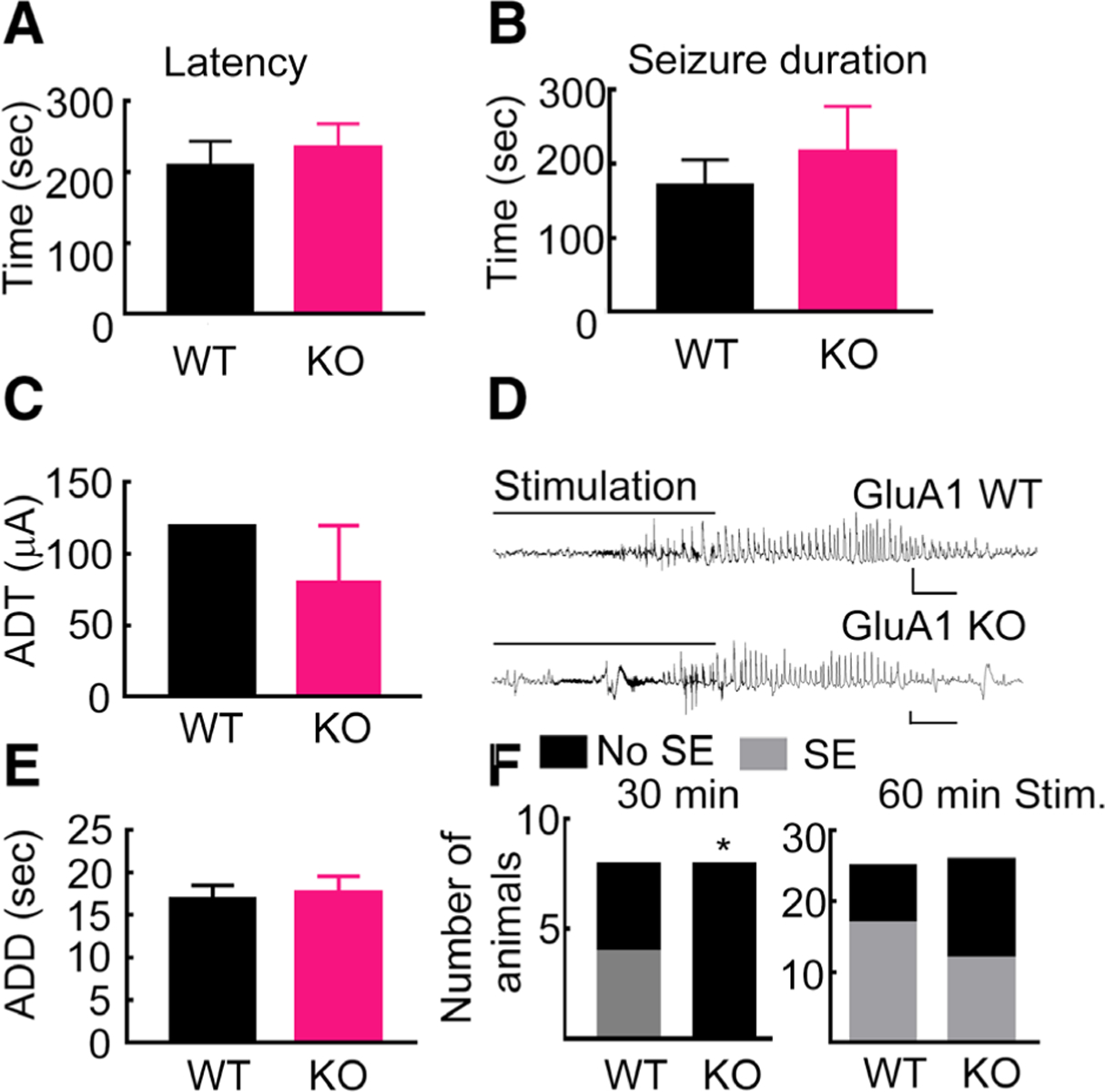FIGURE 2:

Seizure susceptibility in GluA1 knockout (KO) and wild-type (WT) animals was similar. (A) For the pentylenetetrazol (PTZ; 45mg/kg)-evoked seizure, latency was 210 ± 31 seconds in WT animals and 236 ± 32 seconds in KO animals (n = 10 WT and n = 9 KO animals, p = 0.59 unpaired t test). (B) PTZ-evoked seizure duration in the WT and KO animals; WT, 170 ± 35 seconds; KO, 217 ± 61 seconds; p = 0.55, Mann–Whitney test. The median behavioral seizure score (Racine scale) was 5 in WT animals and 4.5 in KO animals, p = 0.54, Mann–Whitney test (data not shown). (C) The intensity of current necessary to evoke a hippocampal seizure (after discharge threshold [ADT]) in WT (range = 40–200μA, median = 120, n = 19) and in KO animals (range = 20–160μA, median = 80, n = 20; p = 0.23, Mann–Whitney test). (D) A representative seizure recorded from an ipsilateral cortical electrode in response to 10 seconds of hippocampal stimulation in the WT and KO animals. The x and y scale bars represent 2 seconds and 1mV, respectively. (E) The duration of afterdischarges evoked in the WT and KO animals. The afterdischarge duration (ADD) in the WT animals was 7.0 to 37 seconds, median = 17 seconds, n = 19 and that in the KO animals was 6.7 to 49 seconds, median = 16.6 seconds, n = 20; p = 0.98, Mann–Whitney test. (F) The number of animals that experienced status epilepticus (SE; self-sustaining seizures lasting >5 minutes) following hippocampal stimulation in the 2 genotypes. SE was induced in 50% of WT (n = 8) and 0% of KO (n = 8) animals after 30 minutes of stimulation (p = 0.038, Fisher exact test) and in 68% of WT (n = 25) and 46% of KO (n = 26) animals after 60 minutes of stimulation (p = 0.098, Fisher exact test).
